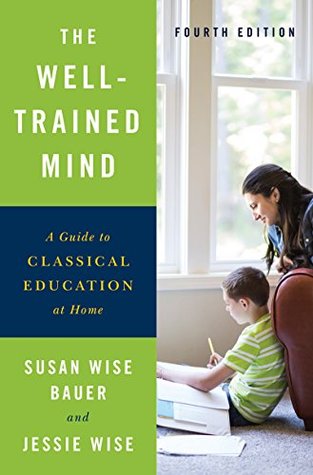More on this book
Community
Kindle Notes & Highlights
Kingfisher History Encyclopedia, 3rd ed.
Children’s Encyclopedia of American History.
Mills, Dorothy. The Book of the Ancient . . . series, ed. by Memoria Press. Louisville, KY: Memoria Press.
Payne, Elizabeth. The Pharaohs of Ancient Egypt.
The Greek News.
The Egyptian News.
Macaulay, David. Castle.
Cathedral,
Mills, Dorothy. The Book of the Middle Ages, ed. by Memoria Press. Louisville, KY: Memoria Press, 2012.
Castle Diary.
Late Renaissance/Early Modern, 1600–1850
Daugherty, James. The Landing of the Pilgrims. New York: Random House, 1981.
Spier, Peter. The Star-Spangled Banner.
Anne Frank: The Diary of a Young Girl.
U.S. States and Capitals Flash Cards.
SUBJECT: Spelling, grammar, reading, and writing, grades 5–8 TIME REQUIRED: 5 to 10 hours per week
For middle-grade students, label one notebook “Writing” and a second notebook “Literature.” Divide the Writing notebook into four sections: Spelling, Word Study, Grammar, and Compositions.
Divide the Literature notebook into two sections: Reading and Memory Work.
In the Spelling section, begin to make a list of commonly misspelled words.
Also have her copy any spelling rules that she has particular trouble remembering and applying (such as the infamous “i before e” rule) into this section of the notebook.
the student should also begin to keep lists of prefixes, suffixes, word roots, and their meanings in the Word Study section of the notebook.
When the spelling curriculum is completed—usually, sometime around seventh grade—vocabulary study will replace spelling as a formal subject.
The logic-stage student must use a formal grammar program to build the language skills so necessary for good writing.
We don’t think diagramming sentences ought to be optional. Sentence diagrams reveal the logic of sentence structure, just as syllogisms reveal the logic of arguments.
Use the grammar texts for grammar, and ignore the composition exercises in favor of the approach we describe in this chapter.
Reading and history will inevitably overlap. Just try to keep a balance: at least one work of imagination for every biography or book of history. Historical novels are fine, but make sure that the child also reads versions of the classics, if not the classics themselves.
Aim to spend at least three days per week, forty-five to sixty minutes per day, on reading—that is, reading the books, talking about them, and following the writing pattern
Throughout the logic stage, don’t forget to provide a full hour (at least), four days per week or more, some other time during the day for free reading.
After each book is finished, spend some time talking to the student about the literature she’s just read, using the questions above.
As she moves on to longer and more complex books, she may take a week or so to read a single book and write a one-page summary.
At the end of the narration, ask the child to write a one- or two-sentence evaluation of the book that includes specific reasons why she did or didn’t like the book.
This process of selecting, evaluating, and criticizing will move the fifth grader from grammar-stage reading (where she simply repeats what she reads back to you) into logic-stage reading.
Miguel de Cervantes, Don Quixote, abridged
Charles Perrault, Perrault’s Complete Fairy Tales
John Bunyan, The Pilgrim’s Progress
Daniel Defoe, Robinson Crusoe
Washington Irving, The Legend of Sleepy Hollow and Rip Van Winkle
Jacob and Wilhelm Grimm, Grimm’s Fairy Tales
Lewis Carroll, Alice’s Adventures in Wonderland
Jane Austen, Pride and Prejudice
Mark Twain, The Adventures of...
This highlight has been truncated due to consecutive passage length restrictions.
Jules Verne, 20,000 Leagues u...
This highlight has been truncated due to consecutive passage length restrictions.
Charles Dickens, A Chris...
This highlight has been truncated due to consecutive passage length restrictions.
Edgar Allan Poe, “The Raven”
Spelling 15–20 minutes, 3–4 days per week Begin or continue with formal spelling curriculum.
Grammar 40–60 minutes, 4 days per week Formal grammar
Reading: Literature 45–60 minutes, 3 days per week Read ancient myths and legends, versions of classics, and books about ancient writers. Write brief narrative summaries, ending with a short evaluation. Begin to discuss critical issues orally. M...
This highlight has been truncated due to consecutive passage length restrictions.
Reading: Skills 1 hour, 4 or more days per we...
This highlight has been truncated due to consecutive passage length restrictions.
Writing Daily, time will vary Two narrative summaries per week (overlaps with literature, history, and science assignments); at least one one-level outline per week of a no...
This highlight has been truncated due to consecutive passage length restrictions.
The Writing Road to Reading,


